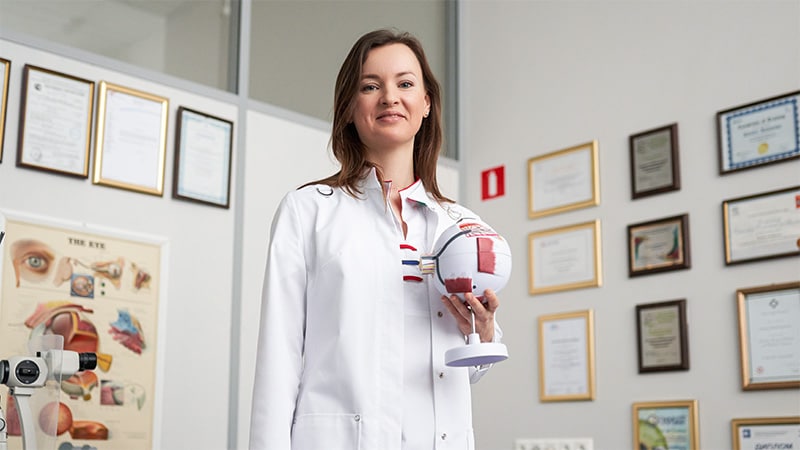Getting a medical degree is a major achievement. But does the future of healthcare require even more letters after your name? Whether it’s part of the initial plan or a second act, a rising number of medical students and current doctors are pursuing a dual degree. Many are not simply following a distinctive career path. They are aiming toward course-correcting deficits and exploring how additional training could help reshape a healthcare system that many feel is in crisis. Their skills are crucial, they believe, to reimagine healthcare for the future.
We’re seeing the trend in enrollment rates and the expansion of dual degree programs. While data from the Association of American Medical Colleges have shown that 9% of medical students overall are earning a dual degree, a 2021 study found a 434% increase in students pursuing an MD/MPH degree from 2010 to 2018. Other research has noted a growing number of medical schools providing dual options. In 2022, 61% of medical schools offered an MD/MBA program — up from 26% in 2002.
Whether they’re pursuing a combination of clinical work and research, entrepreneurship, or health policy, the goal is the same: better patient care. Medscape Medical News spoke with four medical students and current physicians about what shaped their decision to pursue a second (or even third) degree and the value in “not staying in their lane.”
MD + Health Policy: Creating Meaningful Change
Sydney Sharp, a third-year medical student at the University of Pittsburgh School of Medicine, Pittsburgh, felt the drive to pursue a dual degree early in her training. As an undergrad at the University of Maryland, College Park, Maryland, Sharp earned both a BS in biological sciences and a BA in African American studies. “That influenced my trajectory, as it opened my eyes to how social inequities and social injustice shape health,” she said.
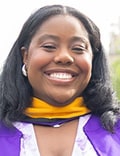 Sydney Sharp
Sydney Sharp
Postgraduation, Sharp entered medical school, but it didn’t feel like enough. “I missed that interdisciplinary aspect that I unknowingly made for myself in undergrad. I recognize that our health is shaped by far more than what happens in the exam room.”
So, Sharp took time off to earn her master’s in public policy at the NYU Wagner Graduate School of Public Service, New York City. She recently finished and will soon return to medical school to reintegrate back into the MD program.
Internships with the Joint United Nations Programme on HIV/AIDS in Geneva, Switzerland, where she was part of the Human Rights and Law Department and conducted Medicaid policy research as part of her required longitudinal research project, also helped Sharp think outside the exam room.
“I saw firsthand how law, economics, and health systems intersect,” Sharp explained. And while there have been more of these essential conversations happening in medical school, she felt it was important to seek out additional training.
At a time when health systems are facing both rapid innovation and persistent inequities, Sharp feels that the sweet spot of the dual degree in medicine and health policy will give her an edge, “combining patient-level insight with system-level change.”
“We are really at a crossroads in how we want to move forward as a country,” Sharp said. “I think the pandemic revealed a lot of unfortunate cracks in the system, and it showed how factors like housing, transportation, education, and healthcare are inseparable and how critical it is for physicians to have a voice in policy conversations.”
The path has not been without its obstacles. One of the biggest: explaining this nontraditional route to others in medicine. It takes a conversation, but eventually, she says, “it clicks.”
MD + MPH + MBA: Diversifying Your Skill Set
Leslie Kim already earned a combined MD/MPH degree at Northwestern University, Evanston, Illinois, more than a decade ago. She is now adding an MBA. “Before I started med school, I thought I wanted to be involved in global health,” said Kim, who studied abroad in South Africa in college and has worked on medical mission trips during her training and as an attending physician.
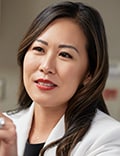 Leslie Kim, MD, MPH
Leslie Kim, MD, MPH
A decade into her career as a facial plastic surgeon, Kim began planning her second act. “I’m a professor, I have developed an amazing practice I love. I could do this for the rest of my life and be happy,” she said. But she knows she can do more.
“I’m pursuing an executive MBA to broaden my thinking and improve my business and entrepreneurial skills to transform my clinical practice and open up new opportunities,” Kim said. Currently a clinical professor of otolaryngology at The Ohio State University Wexner Medical Center, Columbus, Ohio, Kim enrolled in the university’s MBA program and will complete her degree in May 2026, 18 months after starting.
“The MBA will help elevate my knowledge to make better business and leadership decisions,” said Kim. For example, as part of an entrepreneurship class, Kim created and pitched an idea for a surgical medical device, and she has now filed a provisional patent application.
“It could amount to something or not,” she admitted. “But there could be potential for innovating and transforming surgical care, not just for me but for everyone.”
There are bigger implications for pursuing an MBA as an MD. “We’re in this age of disruption,” Kim said. “AI [artificial intelligence] is going to change healthcare. We haven’t quite seen it yet, since healthcare is slower to adopt such disruption, but it’s coming. Diversifying your skill set with different degrees may put you more at the forefront of innovation to accept and leverage it.”
MD + Master of Science in Clinical Investigation (MSCI): Giving Future Patients Hope
Ian Jaffe’s career goals also look different from when he started medical school in 2020. “I did not plan to do a dual degree. But one thing medical training is especially good at is exposing you to a lot of different patients through clinical rotation. It was impossible to go through that without seeing patients [where] we have nothing we can currently offer them in terms of treatment or seeing patients that the medical field has failed in other ways,” explained Jaffe. In May, he graduated from the MD/MSCI program at NYU Grossman School of Medicine, New York City.
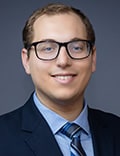 Ian Jaffe, MD, MSCI
Ian Jaffe, MD, MSCI
After meeting patients with kidney disease on the waitlist for transplant, Jaffe decided to pursue research in organ failure and transplantation. “These patients are on the waitlist because we don’t have enough organs to meet demand. I realized I didn’t have the skills to advance research in solving this problem.”
The MSCI changed that. The focus of Jaffe’s research is on prospective technologies to create new sources of organs, whether those are rehabilitated human organs or genetically edited pig organs that can be transplanted into humans. Ultimately, his goal is to work at an academic medical center as a transplant surgeon while also conducting research to advance the technologies that — he hopes — will one day eliminate the need for a waitlist.
The journey hasn’t always been smooth. “During my final year of medical school, it was tough at times to balance clinical duties with the research work required for the dual degree. But in many ways, that challenge was excellent preparation for the future, since balancing patient care and research is an ever-present part of a career in academic medicine,” said Jaffe.
Jaffe believes the dual degree is part of a larger trend of seeking additional education and training. “Regardless of degree, the motivation is similar,” he said. “We’re seeing problems in the medical field and wanting to develop the skills to fix them. We’re recognizing that it takes more formalized training to be equipped to make an impact down the road.”
MD + Bioethics: ‘It’s Infused in Everything We Do’
Alyssa Burgart also took a nontraditional route toward medicine. She originally studied bioethics and worked professionally in the field. She then entered medical school to earn a master’s in bioethics along with a medical degree. “If I can be honest, this was very masochistic of me, despite it being a wonderful experience,” said Burgart, who graduated from the dual program at Loyola University Chicago in Chicago in 2010.
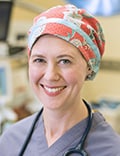 Alyssa Burgart, MD
Alyssa Burgart, MD
Why the unconventional path? Working in bioethics, Burgart had the opportunity to be in a hospital setting, but she also sought to understand medicine. “I wanted to figure out how to thread those things together in a clinical job. Getting a master’s degree is a way to make it clear that I wanted to make it a serious, long-term part of my career.”
Burgart was blazing her own trail. “When I was in the [dual degree] program, there were very few masters in bioethics at all. I feel that I’ve really taken that learning that I did at Loyola and have been able to expand it into building the kind of career that I wanted,” she said.
The field remains small today. Kayhan Parsi, JD, PhD, professor and graduate program director of the Neiswanger Institute for Bioethics at Loyola University Chicago, says the program enrolls between one and four students annually. But they’re exceptionally “committed.” Parsi, who is the past president of the American Society for Bioethics and Humanities, explains that while physicians can obtain additional training and certificates in bioethics, those who want to be leaders, especially in academia, are more likely to go for this dual degree.
After finishing her medical training, Burgart sat down with the director of the Stanford Center for Biomedical Ethics to talk about possible opportunities. Her background was a huge advantage. “That meeting highlighted for me how valuable the master’s degree was. It further contextualized my work and education, and I could pop into the Stanford ecosystem as someone who didn’t need to go through additional training as an attending.”
Today, Burgart is the medical director of Clinical Ethics at Stanford Medicine Children’s Health, Palo Alto, California. She also works as a pediatric anesthesiologist. “You really see how ethics and ethical practice is infused in pretty much everything we do as clinicians. We have more responsibility than ‘do no harm.’”
For Sharp, Kim, Jaffe, and Burgart, the extra work (and sometimes years) involved in a dual degree is worth the effort. It’s all part of their larger plan to enact change where they know they can make a difference. They believe that policy, research, developing new tools and technologies, or making sure medical ethics are part of the conversation will create a better future for patients, in a time when it’s needed more than ever.

